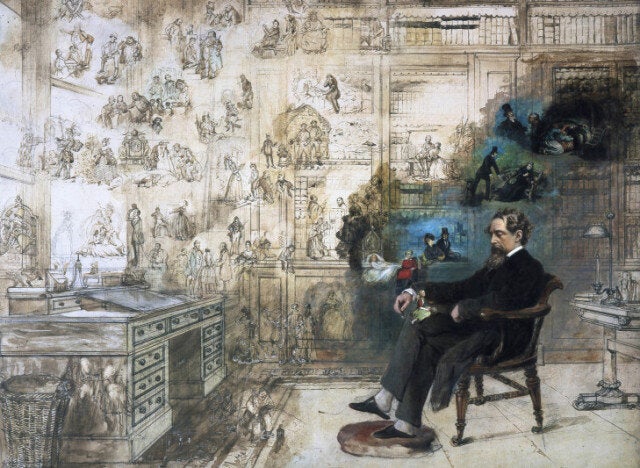Call someone a scrooge this Christmas, and you’ll be quoting Charles Dickens.
In 2012 it will be 200 years since author who gave readers Scrooge, Oliver Twist and even invented the term "red tape" was born. To mark the occasion, one of the largest Dickens exhibitions ever is opening at the Museum of London to celebrate the author’s relationship with the city.
A terrible insomniac, Dickens would pace the city’s streets at night, using these midnight encounters as inspiration. Like many writers of the era he was painfully aware of society’s duplicity; pictures of rich Victorians taking tea in the parlour did not reveal the dark underbelly of society that pushed little naked boys up chimneys to sweep.
With the industrial revolution and the advent of railways, trade was booming. It was an exciting time to live in London’s throbbing metropolis, perched triumphant at the helm of the Great British Empire.
Despite that, millions of children never reached adulthood and injustice spoiled across the capital's sprawling streets. Dickens meant it when he opened A Tale of Two Cities with: “It was the best of times, it was the worst of times.”

Child-sized coffins and Victorian funeral paraphernalia show how wealthy undertakers were cashing in on death, boasting healthy businesses across the city. Dickens was against the pomp and ceremony of funeral rituals in 19th century London, saying in Oliver Twist:
“It was a nice sickly season just at this time. In commercial phrase, coffins were looking up.”
Diseased children feature prominently in Dickens, readers experiencing huge empathy with the illness of youngsters. One in five children died before the age of one in Victorian times.
When in the serialisation of The Little Curiosity Shop, it became clear that Little Nell would die, readers wrote to Dickens, begging him not to kill her.
The issue aroused powerful emotions among Victorians, who knew firsthand the pain of premature death.
One century later, times had changed, as Oscar Wilde noted: "One would have to have a heart of stone to read the death of Little Nell without laughing."

The London exhibit allows visitors to explore East End opium dens described by Dickens in his final unfinished work, The Mystery of Edwin Drood. Pipes and pictures allow modern Londoners to fall deep into the drug-addled world of Chinese sailors and opiate addicts lying on couches, smoking opium in dockside dens.
Dickens' writing desk is on display as well as costumes from the BBC drama Great Expectations set to be broadcast over Christmas. The original manuscripts from some Dicken’s best loved novels can also be seen, his spindly Victorian letters overlaid by crossings out and amendments.
A short documentary by William Raban overlaid by text from the author shows how timeless his night walks observations into the heart of the capital really were. As the man himself wrote:
"The great heart of London throbs in its Giant breast. Wealth and beggary, vice and virtue, guilt and innocence, repletion and the direst hunger, all treading on each other and crowding together, are gathered round it. Draw but a little circle above the clustering house-tops, and you shall have within its space, everything with its opposite extreme and contradiction, close beside."
Dickens and London is being held at the Museum of London in the City of London Until 10 June.